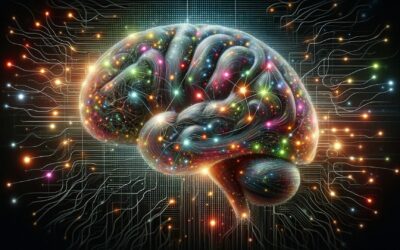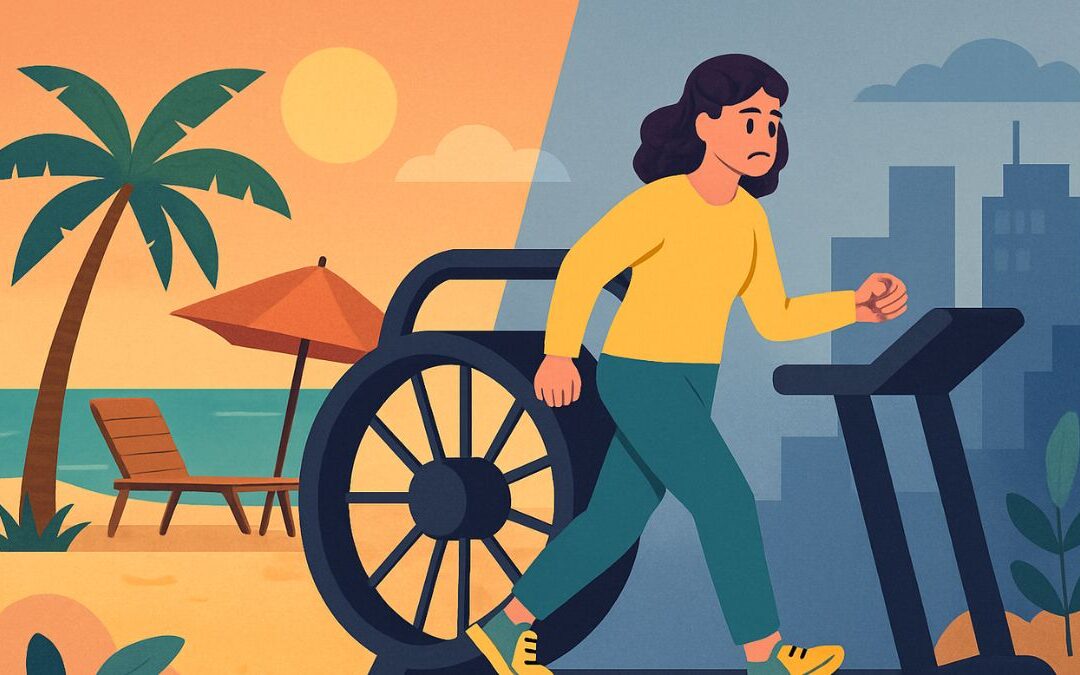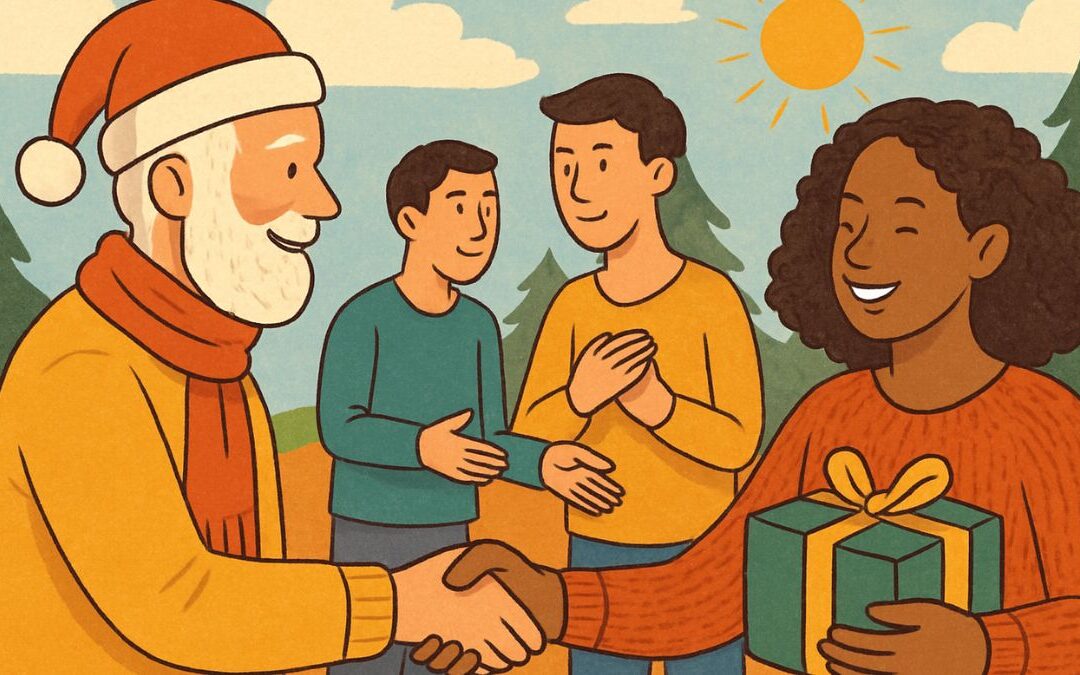Dive into the intriguing world of natural selection with Danny on English Plus Podcast. In this episode, we’ll explore how evolution works and shapes the incredible diversity of life on our planet. Join us for an engaging journey filled with real-life examples, making the complex concept of natural selection accessible and relevant to everyone.
Episode Audio
Interactive Transcript
You can enjoy listening and watching the words you’re listening to with the additional functionalities the interactive transcript offer you, like searching for words and jumping to a specific segment and more. Try the new way of interactively listening to the episode for more engagement and learning with English Plus Podcast.
Episode Transcript
Part 1: Natural Selection
Welcome to English Plus Podcast, I’m your host, Danny. Today, we’re embarking on an exciting journey to explore one of the most fascinating concepts in science: Natural Selection. This concept is not just for scientists; it’s a fundamental idea that shapes the world around us, from the birds chirping outside your window to the pets lounging at your feet.
Let’s start at the beginning. What is natural selection? It’s a process where organisms better adapted to their environment tend to survive and produce more offspring. Think of it as nature’s way of selecting the best-suited traits for survival. Charles Darwin, a name synonymous with evolution, introduced this idea, revolutionizing how we understand life on Earth.
Imagine you’re walking through a forest and come across two types of beetles: one bright green and one brown. The green beetles, though beautiful, are easily spotted by birds and eaten. The brown beetles, however, blend in with the forest floor. Over time, there are more brown beetles than green ones because they survive longer and reproduce more. This is natural selection in action.
But natural selection isn’t just about survival; it’s about reproduction too. Take peacocks, for example. Male peacocks have extravagant tail feathers to attract females. The more impressive the display, the more likely they are to find a mate and pass on their genes. It’s not just about staying alive; it’s about passing on the torch of life.
Now, let’s relate this to something we all experience: illness. Ever wonder why we keep getting new flu shots? That’s natural selection at work! Flu viruses constantly evolve, and the ones that can bypass our immune defenses survive to infect more people. Our bodies and the flu virus are in a constant evolutionary race.
Another example is antibiotic resistance. Bacteria that can withstand antibiotics survive and multiply, while the others die off. This is why it’s crucial to use antibiotics responsibly. We’re unintentionally selecting for superbugs!
But natural selection isn’t always doom and gloom. It’s also responsible for the incredible diversity of life we see around us. From the majestic elephants in Africa to the tiny hummingbirds in your garden, natural selection has shaped every creature uniquely suited to its environment.
And here’s a fun fact: Did you know that dogs evolved from wolves? Yes, through a process akin to natural selection, where humans played a role by breeding wolves with traits they found desirable, like tameness and loyalty. Now, we have a wide variety of dog breeds, each with unique characteristics.
Natural selection also explains certain human traits. Ever wondered why some people can digest lactose, the sugar in milk, while others can’t? It’s because, in populations where dairy farming was common, individuals who could digest lactose were more likely to survive and reproduce. This trait was then passed down through generations.
Understanding natural selection helps us appreciate the interconnectedness of life. It reminds us that we’re part of a larger, ever-changing tapestry. So next time you’re out in nature or even looking at your pets, think about the incredible journey of evolution that brought them to you.
As we wrap up, I encourage you to look at the world around you through the lens of natural selection. Observe the traits in plants and animals in your environment and ponder how they might have evolved. This perspective not only deepens our understanding of life but also fosters a greater appreciation for the natural world.
Now, get ready for our next segment, Word Power, where we’ll dive into the keywords of today’s topic. Stay tuned, and don’t go anywhere; I’ll be right back.
Part 2: Word Power
Welcome back to English Plus Podcast, where we not only explore big ideas but also delve into the language that brings these concepts to life. In our previous segment, we discussed the fascinating world of natural selection and evolution. Now, let’s untangle some key terms and phrases from our discussion, enhancing both our scientific understanding and our English vocabulary.
Firstly, ‘Natural Selection,’ a cornerstone of evolutionary biology, is the process where organisms better adapted to their environment tend to survive and produce more offspring. This concept, introduced by Charles Darwin, is not just a scientific term but a lens through which we view the survival and thriving of species. Darwin, an iconic figure in biology, revolutionized our understanding of life with his theory of evolution, explaining how species change and adapt over generations.
Speaking of ‘Evolution,’ this term is more than just biological change over time. It’s the story of life, of how diverse species, from the majestic elephants to the tiniest bacteria, have come to be. It’s the narrative of life’s adaptations and transformations across eons.
Consider the ‘Environment.’ In natural selection, the environment is the stage where the drama of survival unfolds. It’s not just a place; it’s a complex web of conditions and interactions that influence the life and fate of organisms living within it.
Now, let’s talk about ‘Reproduction.’ Often overshadowed by the survival aspect of natural selection, reproduction is equally vital. It’s the mechanism through which life perpetuates, passing on genetic information from one generation to the next.
Our conversation wouldn’t be complete without mentioning ‘Genes.’ These are not just units of hereditary information; they are the scriptwriters of life, determining traits and characteristics that get passed down through generations.
We touched upon ‘Antibiotic resistance,’ a pressing concern in modern medicine. It’s a prime example of natural selection in action, where bacteria evolve to survive against antibiotics, challenging us to find new ways to combat infections.
The term ‘Diversity of Life’ reflects the vast array of living organisms on Earth, each uniquely adapted to its niche. This diversity, a result of millions of years of evolution, showcases the endless possibilities of life.
Another key term is ‘Adaptation.’ This is the process through which organisms adjust to their environment. Adaptations can be physical, like the camouflage of a chameleon, or behavioral, like birds migrating to warmer climates.
We also discussed ‘Lactose tolerance.’ This specific human adaptation, allowing some adults to digest lactose, illustrates how our diets and lifestyles can shape our genetic makeup.
Lastly, ‘Interconnectedness of Life’ is a concept reminding us that all living beings are part of a larger, intricate web. Understanding this interconnectedness fosters respect and appreciation for the natural world.
These terms and concepts are not just scientific jargon; they are windows into understanding the complexity and beauty of life on our planet. They remind us that language and science are intertwined, each enriching our comprehension of the other.
Now, prepare for our next segment, Action Time, where we’ll translate these ideas into action points or real-life applications. Stay with us, as we explore how to apply the fascinating concept of natural selection in our everyday lives.
Part 3: In Action
Welcome back to English Plus Podcast. Having explored the fascinating concepts of natural selection and evolution, it’s time to bridge the gap between theory and practice. Let’s delve into how these ideas can be applied in our daily lives, transforming our understanding into actionable insights.
Consider the impact of natural selection in agriculture. Farmers have been using principles of natural selection for centuries, albeit unknowingly, by selectively breeding crops and livestock. This practice, known as artificial selection, involves choosing plants and animals with desirable traits and breeding them to produce even better offspring. For example, if you’re growing tomatoes in your garden, selecting the most robust and flavorful ones for seeds next season is a practical application of these principles. By understanding natural selection, you can become more adept at choosing traits that will thrive in your local environment.
Moving to health and medicine, understanding antibiotic resistance is crucial. We often hear about the dangers of overusing antibiotics, and this ties directly back to natural selection. Bacteria that can withstand antibiotics survive and multiply, leading to strains that our medicines can’t defeat. An actionable step here is to use antibiotics responsibly, only when prescribed by a healthcare professional, and to complete the entire course of treatment. This practice helps prevent the emergence of superbugs, which are a direct consequence of natural selection.
In our daily lives, understanding natural selection can also enhance our appreciation for biodiversity. When hiking, bird watching, or even observing urban wildlife, consider the adaptations these creatures have developed to thrive in their specific environments. This awareness fosters a deeper connection with nature and a greater commitment to conservation efforts. You can take action by supporting conservation initiatives or participating in citizen science projects that contribute to our understanding of wildlife and habitats.
The concept of natural selection even extends to our social lives. Just as species evolve to adapt to their environments, we, too, adapt to social environments. Understanding this can help us navigate social changes more effectively, whether it’s adapting to new technologies or cultural shifts. Being open to change and willing to adapt are practical ways to apply the principles of evolution in our personal development.
Now, let’s turn our attention to the next segment of our podcast, Frequently Asked Questions. In this segment, we’ll address some of the most common queries about natural selection and evolution. We’ll explore questions that might have surfaced in your mind as we discussed these topics, providing clear and concise answers to deepen your understanding. So stay with us, as we dive into the intriguing world of FAQs on natural selection.
Part 4: Frequently Asked Questions
Welcome to another insightful segment of English Plus Podcast. Following our exploration of natural selection and evolution, it’s natural to have questions lingering in your mind. In this segment, we’ll address some frequently asked questions, providing detailed answers to deepen your understanding of these fascinating concepts.
A common question is, “How does natural selection differ from evolution?” It’s important to understand that natural selection is a mechanism of evolution. Evolution is the broader process of change in species over time, and natural selection is one way this change happens. It’s like comparing the process of baking a cake (evolution) to using an oven (natural selection) – one is the overall process, and the other is a tool to achieve it.
Another intriguing inquiry is, “Can natural selection lead to new species?” Yes, it can! When populations of a species get separated and adapt to different environments, over time, these adaptations can lead to the development of new species, a process known as speciation. Imagine a bird species split by a geographical barrier; over generations, each group might adapt to their specific environment, eventually evolving into distinct species.
People often ask, “Does natural selection work on humans?” Absolutely, though it’s more complex than in other species due to our unique social structures and technologies. Factors like culture, medicine, and technology can influence human evolution. For example, our ability to treat diseases might reduce the impact of natural selection on human health, but our lifestyle choices and social behaviors continue to shape our genetic makeup.
“Is natural selection random?” is another fascinating question. The mutations that lead to genetic variation are random, but natural selection is not. It’s a non-random process where traits that confer a survival or reproductive advantage tend to become more common in a population. Think of it as a filter, not a dice roll.
“How fast does natural selection work?” This depends on several factors, including the species, environmental pressures, and the trait in question. Some changes can occur relatively quickly, like bacteria developing antibiotic resistance, while others might take thousands of years.
“Does natural selection always lead to improvement?” Not necessarily. Natural selection leads to changes that are advantageous in a specific environment, but these changes aren’t inherently ‘better’ in a general sense. They are simply more suited to a particular set of conditions.
Another question is, “Can natural selection lead to the extinction of a species?” Yes, if an environmental change is rapid and a species cannot adapt quickly enough, it may become extinct. This is particularly relevant in the context of climate change and habitat destruction.
“Is natural selection the only process that drives evolution?” No, other processes like genetic drift, gene flow, and mutation also contribute to evolution. Natural selection is just one piece of the evolutionary puzzle.
“Can cultural practices influence natural selection?” Certainly. Human cultural practices can influence the course of natural selection, sometimes even counteracting biological pressures. For example, modern medicine allows people with genetic health issues to survive and reproduce, altering natural selection processes.
Lastly, “How do we see natural selection in action today?” We see it in the way pests develop resistance to pesticides, the evolution of disease-causing organisms, and even in the way our domestic animals and crops have changed through selective breeding.
These questions help us explore the depths of natural selection and evolution, revealing the complexity and beauty of these processes.
Up next in our Myth Buster segment, we’ll tackle some common misconceptions and myths about natural selection and evolution. There’s a lot of misinformation out there, and it’s crucial to separate fact from fiction. So, stay tuned as we debunk these myths and clarify the truths behind them.
Part 5: Myth Buster
Welcome to the Myth Buster segment of English Plus Podcast, where we delve into common misconceptions about natural selection and evolution, unraveling the truths behind them.
One widespread myth is that evolution is just a theory, not a fact. This misunderstands the scientific definition of a theory, which is a well-substantiated explanation of some aspect of the natural world. Evolution, supported by abundant evidence from multiple fields, is both a fact and a theory. It’s a fact that evolution occurs, and the theory of evolution explains how it occurs.
Another misconception is the belief that evolution means humans evolved from monkeys. This is a misrepresentation. Humans and monkeys share a common ancestor, but each has evolved along separate paths. It’s like saying you and your cousin are descended from each other, rather than both being descended from a common grandparent.
There’s also a common misunderstanding that evolution is a ladder of progress, with humans at the top. Evolution is more accurately depicted as a branching tree, with no single species representing the pinnacle of evolution. Each species, including humans, is adapted to its own specific environment.
Some people think that individual organisms can evolve during their lifetime. This is not how evolution works. Evolution occurs over generations, through changes in the genetic makeup of populations, not individuals. A giraffe can’t stretch its neck longer in its lifetime and pass that trait to its offspring.
The idea that natural selection involves organisms ‘trying’ to adapt is another myth. Adaptation isn’t a conscious effort but a natural consequence of those with advantageous traits surviving and reproducing more successfully. A rabbit doesn’t choose to have a better camouflage; it’s a trait that naturally emerges and gets passed on.
There’s a myth that all traits are adaptive, resulting from natural selection. However, some traits are byproducts of other adaptations, or due to genetic drift, where changes in gene frequencies are due to chance.
The belief that evolution always creates entirely new species is a misconception. Sometimes, evolution involves subtle changes within a species. Not every evolutionary change leads to a new species; often, it leads to variations within the same species.
Another myth is that evolution has a direction or goal. Evolution is a response to environmental conditions and genetic variations, without any predetermined direction or end goal. It’s like saying a river carves its path with a specific destination in mind, rather than simply following the path of least resistance.
The idea that if humans evolved from apes, apes shouldn’t exist today, is flawed. This is akin to saying if Americans descended from Europeans, there shouldn’t be Europeans today. Both humans and modern apes evolved from a common ancestral species, each following a different evolutionary path.
Lastly, the notion that natural selection is the sole cause of all life’s diversity is not entirely accurate. While natural selection is a significant factor, other processes like genetic drift and gene flow also play crucial roles in shaping the diversity of life.
Debunking these myths helps us appreciate the complexity and wonder of natural selection and evolution in a more informed way.
In our next segment, In Real Life, we’ll explore some real-life examples of natural selection and evolution, bringing these concepts closer to our everyday experiences. Stay tuned as we connect the dots between theory and the living world around us.
Part 6: In Real Life
And now, let’s bring the concepts of natural selection and evolution into the realm of everyday life with tangible examples featuring realistic people and settings.
Imagine Sarah, a biology teacher in a suburban high school. She uses the example of the local bird population to teach her students about natural selection. In their town, there’s been a noticeable increase in the number of birds with shorter beaks. Sarah explains that this change is due to the birds adapting to the types of food available in urban areas, such as seeds from bird feeders, which are easier to eat with shorter beaks. This real-life observation helps her students grasp how natural selection operates in their own backyard.
Then there’s Alex, a farmer in a rural community. He’s practiced selective breeding with his crops, choosing the most drought-resistant corn plants to seed the next year’s crop. Over time, Alex has developed a corn variety that thrives in the drier climate of his region, a practical application of artificial selection, a form of natural selection influenced by human choice.
In another scenario, consider Maya, a medical researcher. She’s studying the development of antibiotic-resistant bacteria in hospitals. Her research focuses on how these bacteria evolve due to the overuse of antibiotics, a direct example of natural selection. Maya’s work highlights the importance of responsible antibiotic use to prevent the emergence of these ‘superbugs.’
Let’s not forget Leo, an avid birdwatcher and nature enthusiast. He’s observed the migration patterns of birds and how they’ve changed over the years, possibly in response to climate change. This observation ties into how natural selection can drive species to adapt their behaviors in response to environmental changes.
In the urban landscape, there’s Emma, a city planner who considers the impact of urban development on local wildlife. She’s involved in creating green spaces that support the survival of native species, acknowledging how urban environments can shape the evolution and natural selection of urban fauna.
Lastly, picture a group of high school students on a field trip to a natural history museum. As they marvel at the exhibits of ancient fossils and diverse life forms, they witness the story of life’s evolution, understanding that the diversity they see is the product of millions of years of natural selection and evolutionary change.
These examples, featuring people from various walks of life, illustrate how the principles of natural selection and evolution are not just academic concepts but are active and observable in our everyday world. They show us that understanding these principles can lead to better decisions, from farming practices to medical research, urban planning, and education.
Conclusion
And that brings us to the close of another fascinating episode here at English Plus Podcast. We’ve journeyed through the intricate world of natural selection and evolution, uncovering how these monumental concepts play out in the world around us, from the birds in our backyards to the crops in our fields.
But our exploration doesn’t have to end here. The beauty of learning is that it’s an ongoing process, and each one of you plays a vital role in it. I encourage you to take what we’ve discussed today and observe the natural world around you through this new lens. Watch how plants and animals have adapted to their environments, consider the impact of human actions on natural selection, and let this knowledge guide you in making informed decisions in your own life.
Remember, you can support English Plus Podcast by following us and sharing this podcast with your family and friends. Your engagement and enthusiasm are what keep this show thriving. But if you want to take your support to the next level, consider becoming a patron on Patreon. By doing so, you’re not just contributing to the continuity and growth of this podcast; you’re also unlocking access to all our premium episodes, where we delve even deeper into a myriad of topics.
Your support, whether it’s as a listener, a sharer, or a patron, is immensely appreciated. It’s your curiosity and eagerness to learn that fuel this podcast. So, thank you for tuning in, and remember to keep exploring, keep questioning, and keep learning. Until next time, this is Danny, signing off from English Plus Podcast. Keep the flame of knowledge burning!
Quiz
Check your understanding of the concepts you learned in this episode.
Discussion Questions
You can find below some discussion questions base on our topic, and if you click on each discussion point, you will read my take on it, but that doesn’t mean that I’m not waiting to hear from you. On the contrary, you might agree or disagree with me, or have a different perspective to look at the topics discussed below. So, by all means, share what you think in the comments section below and let’s discuss natural selection and evolution.
How do you see natural selection influencing the flora and fauna in your local area? Can you identify any traits in wildlife or plant life that seem to give certain species an advantage in your specific environment?
In my local area, the prevalence of certain bird species with shorter wingspans is a direct response to the urban environment, which favors maneuverability over distance flying. Additionally, plants with shorter growth cycles thrive due to the urban heat island effect, which leads to longer growing seasons.
Discuss how human intervention has affected natural selection in both positive and negative ways. Can you think of examples where human activities have sped up the process of natural selection or created entirely new pressures for species to adapt to?
Human intervention has dramatically influenced natural selection through activities like habitat destruction, which can lead to the rapid extinction of species that cannot adapt quickly enough. Conversely, conservation efforts, such as breeding programs for endangered species, show a positive impact, helping to increase genetic diversity and population numbers.
In the context of medicine and public health, how has our understanding of natural selection changed the way we approach the development of new drugs and the treatment of diseases?
Our grasp of natural selection has significantly impacted medical practices by emphasizing the importance of personalized medicine. For example, understanding that certain populations have genetic predispositions to particular diseases can lead to more targeted and effective treatments.
Consider the concept of natural selection in the digital age. How might the principles of natural selection apply to technology and the way digital “organisms” like software and algorithms evolve?
Digital organisms, like computer viruses, show a form of evolution with new variants emerging to bypass security measures. Similarly, algorithms evolve through machine learning, constantly adapting to data inputs, which is reminiscent of natural selection where the “fittest” algorithms are those that most effectively accomplish their tasks.
Reflect on the ethical implications of artificial selection, especially with advancements in genetic engineering and CRISPR technology. What responsibilities do we have when we can directly influence the genetic traits of future generations?
The ethical implications of artificial selection with gene editing tools like CRISPR are vast. There is a moral responsibility to consider the long-term consequences of editing genes, such as potential impacts on ecosystems, unintended health effects, and the implications of altering human genes.
How does understanding natural selection and evolution impact your views on conservation and the environment? Does it change your perspective on issues like climate change, habitat destruction, and species conservation?
Understanding natural selection reinforces the importance of conserving biodiversity as it highlights how every species plays a role in its ecosystem. It also underscores the urgency to protect environments from the rapid changes brought about by climate change, to which many species cannot adapt quickly enough.
Explore the idea that cultural evolution in humans can be seen as a form of natural selection. How do cultural trends, memes, and societal norms evolve and spread in ways that are analogous to biological traits?
Cultural evolution can indeed be seen as a type of natural selection, where ideas and behaviors that better “fit” the societal environment become prevalent. For instance, social norms that promote sustainability and resource-saving behaviors are becoming more widespread as the global community becomes more environmentally conscious.
Discuss how the theory of evolution through natural selection can be reconciled with various religious and philosophical beliefs. How do different worldviews incorporate or challenge the scientific understanding of life’s diversity?
The reconciliation of evolution with religious and philosophical beliefs varies widely. Some see no conflict, considering evolution as a process guided by a divine power, while others may interpret it as a call to re-evaluate certain literal interpretations of religious texts in favor of metaphorical or allegorical readings.
With the increasing global movement of people, how might gene flow affect the future of human evolution? What impact might this have on the genetic diversity of our species?
Gene flow due to global human movement could lead to a more genetically diverse human population, which might increase the resilience of our species to diseases and environmental changes. It also has the potential to decrease the prevalence of certain inherited diseases that are common in isolated populations.
Finally, consider the future of evolution. With our planet changing rapidly due to human influence, what predictions can we make about the future of natural selection and the evolution of life on Earth?
Predicting the future of evolution is complex, but with the current trajectory of human influence, we can expect to see species adapting to warmer climates, higher CO2 levels, and urban environments. This could mean the emergence of new traits that allow for survival in these altered conditions, and possibly the decline of species that cannot adapt.











0 Comments